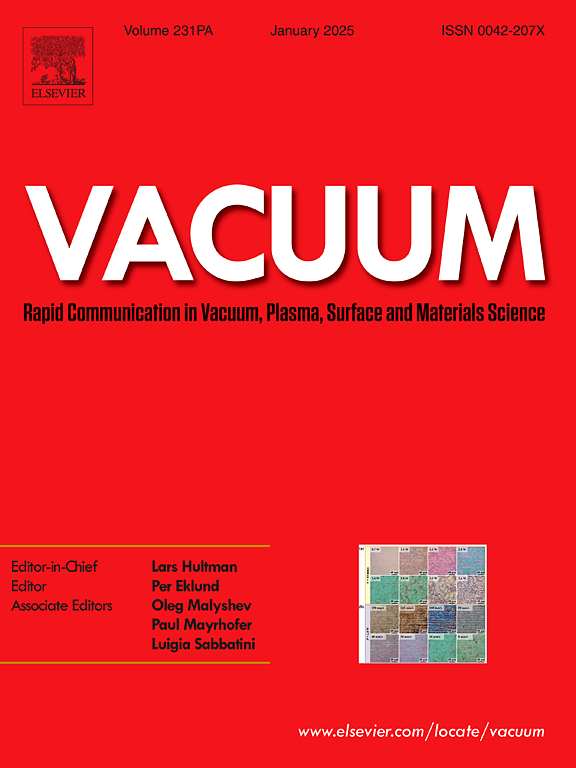Microstructural charactristics of laser repaired Rene 142 turbine vane using Hastelloy W and C263 filler metals under high-temperature burner-rig test
IF 3.9
2区 材料科学
Q2 MATERIALS SCIENCE, MULTIDISCIPLINARY
引用次数: 0
Abstract
In this study, the repair of René-142 was performed using pulsed laser welding with two different filler metals: Hastelloy W (HW) and C263. HW was employed for the initial two weld passes, followed by five passes with C263. Following the repair process, the specimens were exposed to the burner-rig test at 900 °C for periods of 1 h and 200 h. The results revealed that, before the burner-rig test, the base metal exhibited a γ-phase matrix containing coarse, cuboidal γ′ precipitates, along with tantalum and tungsten carbide particles. A 1-h burner-rig test did not significantly alter the microstructure of the base metal. However, after 200 h, γ′′ precipitates replaced the γ′ precipitates, leading to a hardness reduction from 360 to 310 Vickers. Both HW and C263 initially exhibited a single γ phase. The 1-h burner-rig test led to the formation of grain boundary and intragranular Ni2Mo and Ni3Mo precipitates in the HW, increasing the hardness value from 360 to 420 Vickers. In contrast, C263 maintained microstructural stability after 1-h burner-rig test, decreasing the hardness value from 350 to 290 Vickers. Following 200-h burner-rig test, the microstructure of HW revealed a higher density of coarser NiMo precipitates, contributing to a hardness increase up to 511 Vickers. Additionally, coarse NiMo precipitates formed in the dilution zones of both C263 and HW. Nonetheless, C263 retained its single-phase structure, and its hardness decreased to 260 Vickers compared to the 1-h burner-rig test due to increased grain growth.

采用哈氏合金W和C263填充金属激光修复Rene 142涡轮叶片的高温燃烧器试验
在本研究中,使用两种不同的填充金属:哈氏合金W (HW)和C263进行脉冲激光焊接修复ren -142。HW用于最初的两个焊接道次,随后用C263进行了五个焊接道次。修复后,试样在900°C下进行1 h和200 h的燃烧器-钻机试验。结果表明,在燃烧器-钻机试验之前,母材呈现出含有粗的立方γ′析出物的γ相基体,以及钽和碳化钨颗粒。1小时的燃烧器试验没有显著改变母材的显微组织。然而,在200 h后,γ′析出相取代了γ′析出相,导致硬度从360维降至310维。HW和C263最初都表现为单γ相。经过1 h的炉架试验,合金的晶界和晶内Ni2Mo和Ni3Mo析出,硬度由360维氏提高到420维氏。相比之下,C263在燃烧室试验1 h后,其显微组织保持稳定,硬度值从350降至290。经过200 h的燃烧器试验,HW的显微组织显示出更粗的NiMo析出物密度更高,硬度提高到511维氏。此外,在C263和HW的稀释区均有较粗的NiMo析出。然而,C263仍保持其单相组织,由于晶粒生长加快,与1 h燃烧室试验相比,C263的硬度下降到260维氏。
本文章由计算机程序翻译,如有差异,请以英文原文为准。
求助全文
约1分钟内获得全文
求助全文
来源期刊

Vacuum
工程技术-材料科学:综合
CiteScore
6.80
自引率
17.50%
发文量
0
审稿时长
34 days
期刊介绍:
Vacuum is an international rapid publications journal with a focus on short communication. All papers are peer-reviewed, with the review process for short communication geared towards very fast turnaround times. The journal also published full research papers, thematic issues and selected papers from leading conferences.
A report in Vacuum should represent a major advance in an area that involves a controlled environment at pressures of one atmosphere or below.
The scope of the journal includes:
1. Vacuum; original developments in vacuum pumping and instrumentation, vacuum measurement, vacuum gas dynamics, gas-surface interactions, surface treatment for UHV applications and low outgassing, vacuum melting, sintering, and vacuum metrology. Technology and solutions for large-scale facilities (e.g., particle accelerators and fusion devices). New instrumentation ( e.g., detectors and electron microscopes).
2. Plasma science; advances in PVD, CVD, plasma-assisted CVD, ion sources, deposition processes and analysis.
3. Surface science; surface engineering, surface chemistry, surface analysis, crystal growth, ion-surface interactions and etching, nanometer-scale processing, surface modification.
4. Materials science; novel functional or structural materials. Metals, ceramics, and polymers. Experiments, simulations, and modelling for understanding structure-property relationships. Thin films and coatings. Nanostructures and ion implantation.
 求助内容:
求助内容: 应助结果提醒方式:
应助结果提醒方式:


